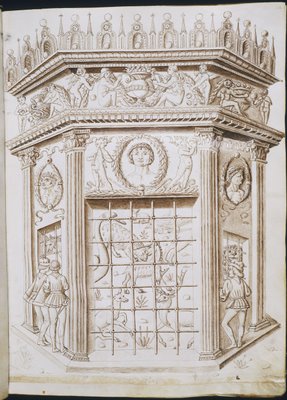
Vivarium
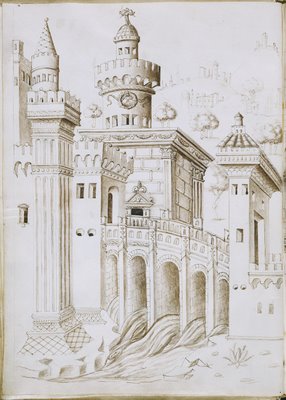
Sacophagus of Emperor Hadrian (Castel Sant'Angelo) and
the Ponte Sant'Angelo, beneath which flows the Tiber river
the Ponte Sant'Angelo, beneath which flows the Tiber river
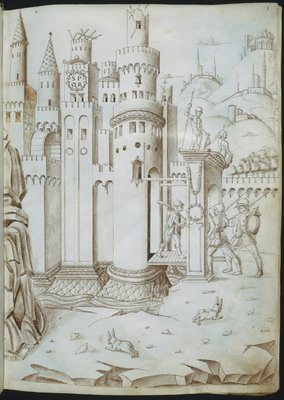
The City Gate with turreted towers
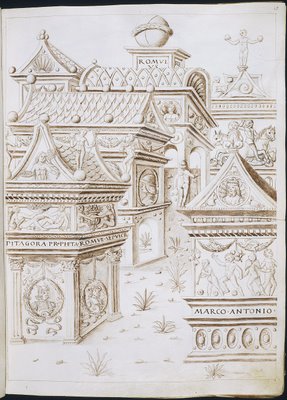
Necropolis with elaborate Sarcophagus bearing inscription
to Mark Anthony, Pythagoras, Romulus and Remus.
to Mark Anthony, Pythagoras, Romulus and Remus.
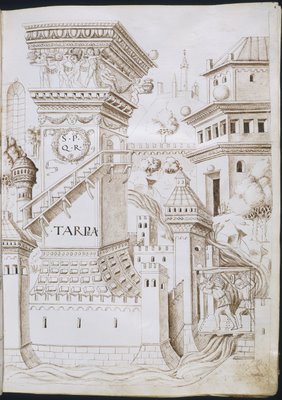
Tarpean Rock
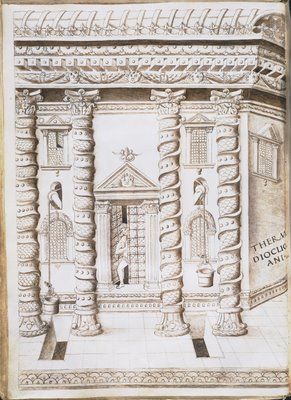
Baths of Diocletian
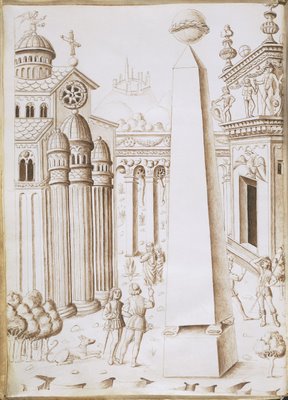

The Roman Forum

Equestrian statue of the Emperor Marcus Aurelius
with ancient monuments in the background
with ancient monuments in the background
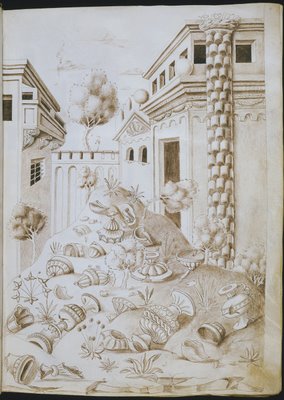
Monte Testaccio with ancient urns on the ground, several broken
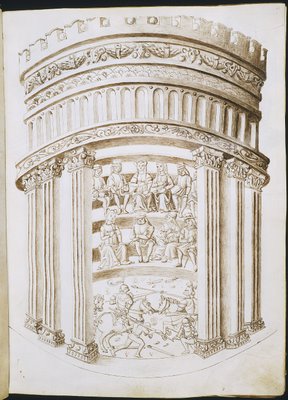
Tournament in a circular pavilion
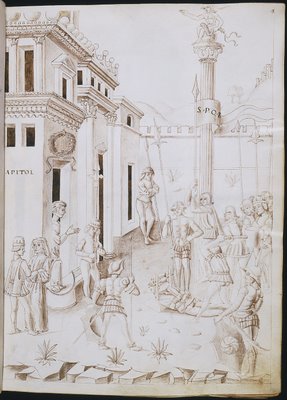
Campidoglio

Arch of Titus, with elaborate carvings and a procession of soldiers
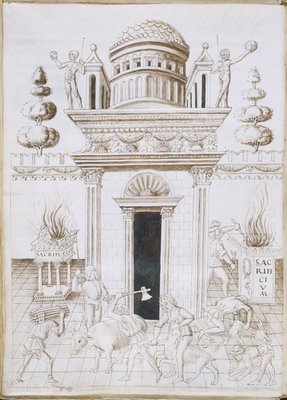
Animal sacrifice outside temple
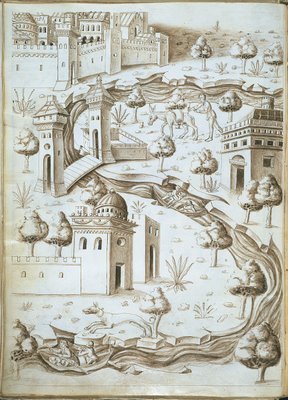
Campagna - winding river with boats outside the city walls
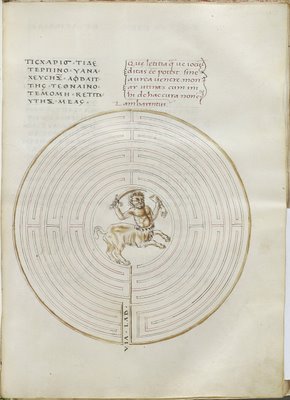
Crete - centaur at the centre of a labyrinth

Cesena - Votive relief depicting a man standing on
the back of a bull and flanked by a bird of prey and
a putto placing a wreath on the man's head.
the back of a bull and flanked by a bird of prey and
a putto placing a wreath on the man's head.
[click images for much larger versions]
This 209 page parchment manuscript (Garrett MS 158) from ~1471 is only available as a 50Mb pdf file from Princeton University. It is one of (I think) 3 to 5 extant copies of 'Collectio Antiquitartum', which is a compilation of works produced by Giovanni Marcanova (c. 1410 - 1467), who was a physician in Padua, an antiquary and bibliophile in Venice and a Professor in Bologna.
The manuscript opens with 18 full page ink and wash drawings of Roman antiquities "in the manner of 'fantasy architecture'". The latin text may or may not have been transcribed by another noted antiquarian, Felice Feliciano and is in general, a collection of antiquarian inscriptions. It derives in part from earlier inscription texts and includes apocryphal letters, excerpts from standard classical works and occasional miniature drawings of monuments, sarcophagi, vases, inscribed steles, mottos and seals.
No comments:
Post a Comment